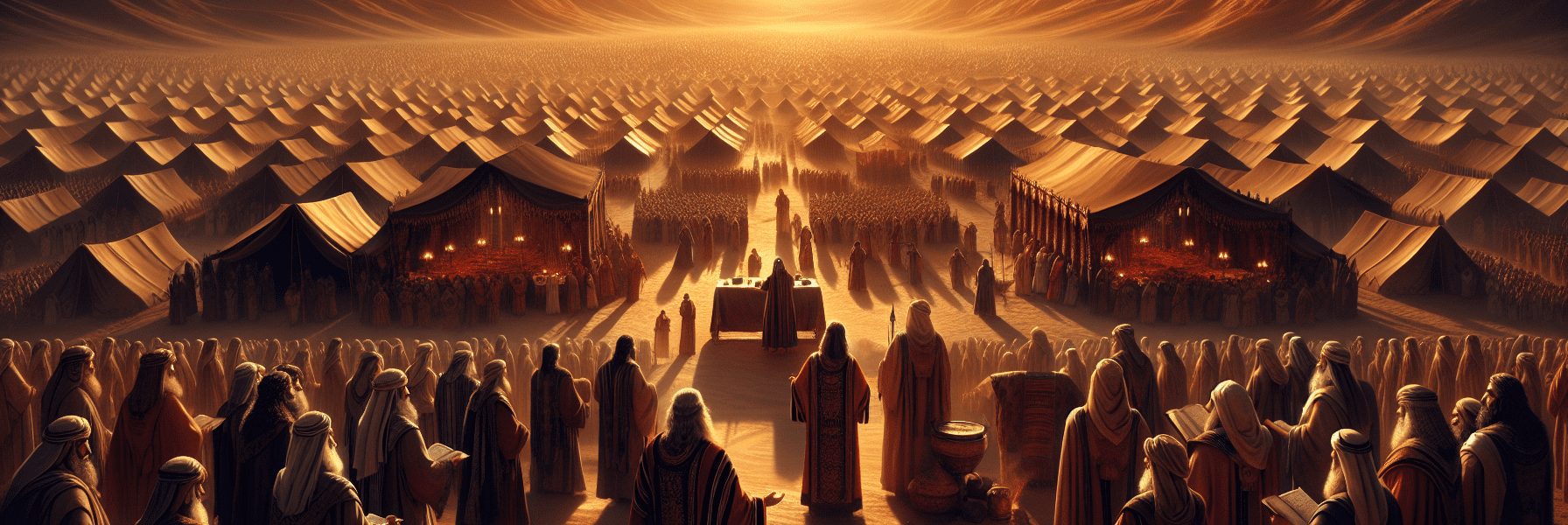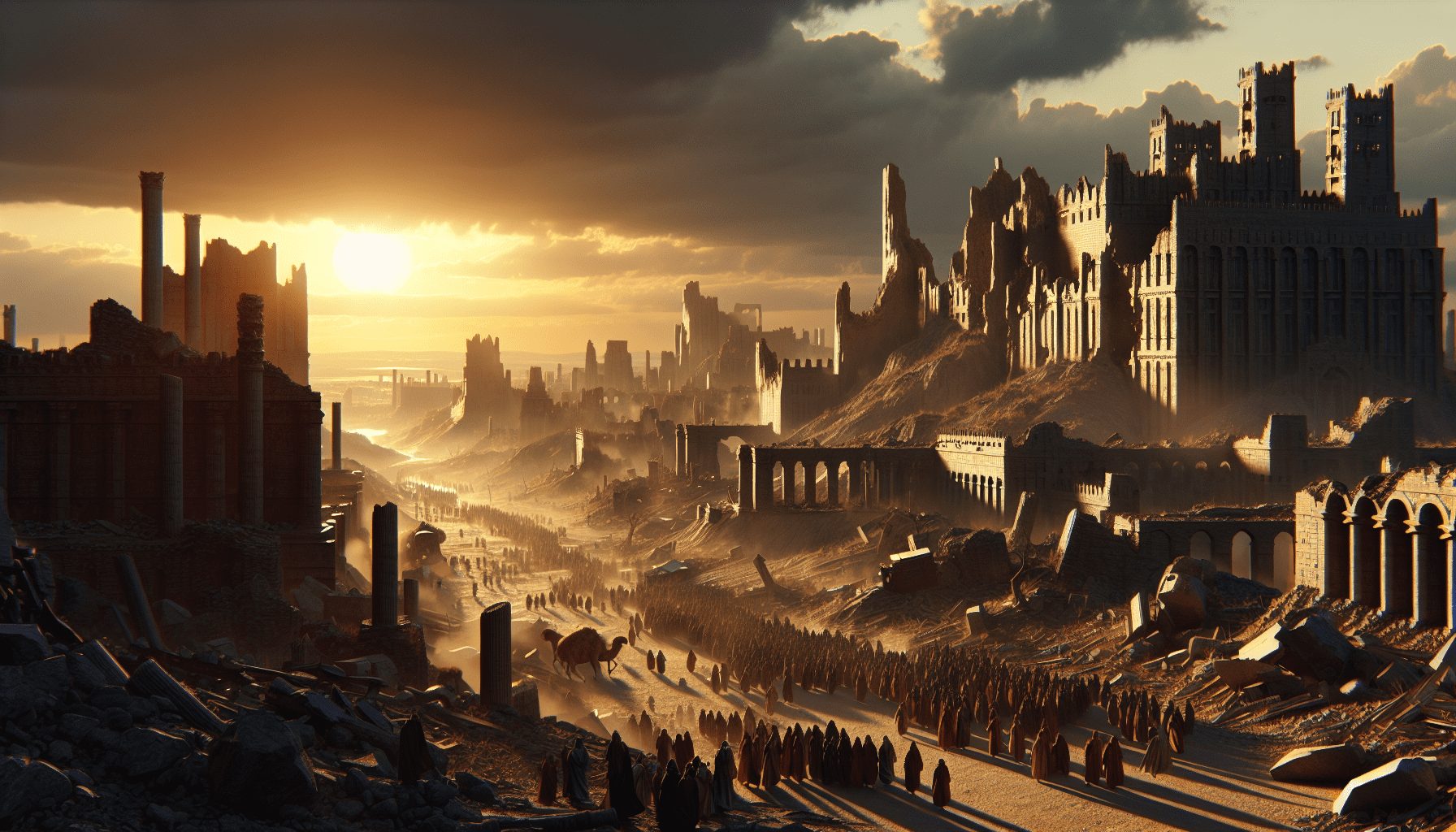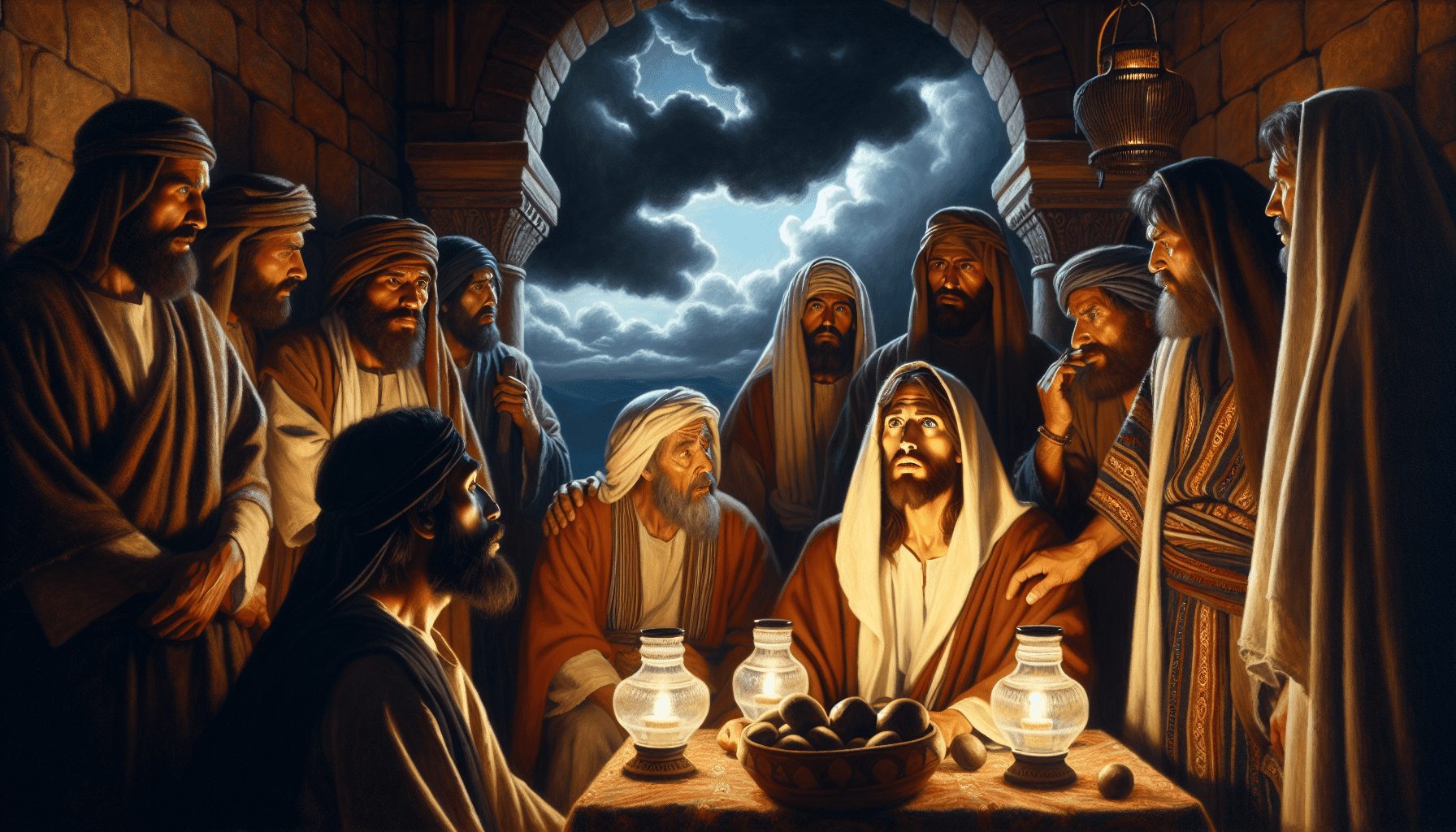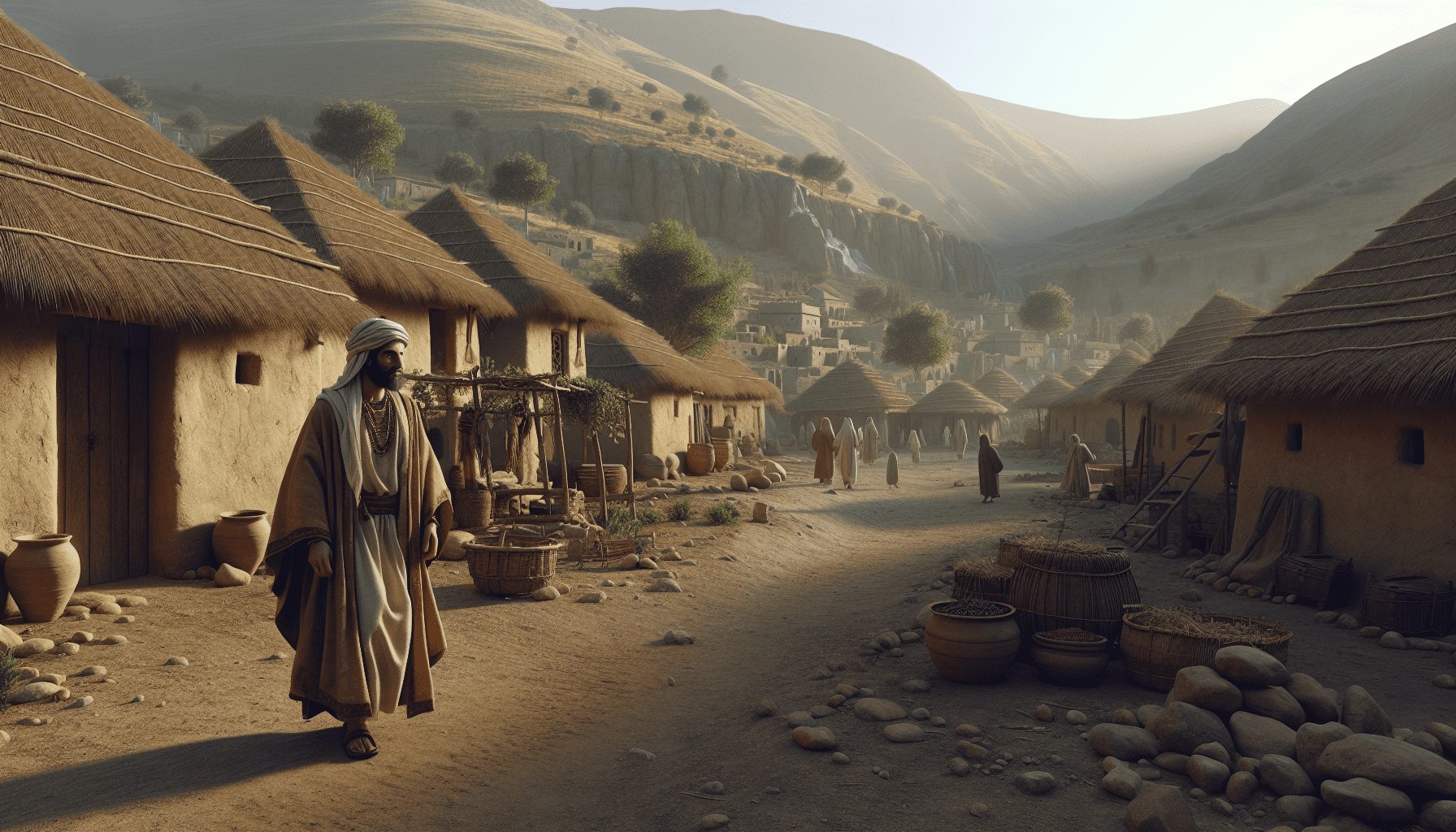**The Ashes of Purification**
The sun hung low over the wilderness, casting long shadows across the Israelite camp. The air was thick with the scent of dust and the murmur of thousands of tents stretching as far as the eye could see. The people had grown accustomed to the rhythm of their journey—packing, moving, settling—yet the laws of the Lord remained unchanging, a constant guide in their wandering.
On this day, Moses gathered the elders and priests before the Tabernacle, his face solemn. The Lord had spoken, delivering a new ordinance—one that dealt with the deepest of impurities: the touch of death.
### **The Red Heifer**
The Lord commanded Moses and Aaron, saying, *”Bring a red heifer without defect, one that has never borne a yoke.”* The people listened intently as the priests searched the herds until they found the perfect animal—a young cow, its coat a deep, unblemished red, its eyes clear and untroubled. It had never been yoked, never labored under the burden of man.
Eleazar, the priest, led the heifer outside the camp, the people following at a distance. The ground was dry, cracked from the sun, yet there was a solemnity in the air. The priests had prepared cedar wood, hyssop, and scarlet yarn—symbols of cleansing and life.
With deliberate care, Eleazar slaughtered the heifer, its blood spilling onto the earth. Then, taking some of the blood on his finger, he sprinkled it seven times toward the front of the Tabernacle, a holy offering before the Lord. The carcass was then burned completely—hide, flesh, blood, and dung—until nothing remained but ashes.
As the flames consumed the sacrifice, Eleazar cast the cedar wood, hyssop, and scarlet yarn into the fire. The scent of burning cedar mixed with the acrid smell of the sacrifice, rising in a thick plume toward heaven. The people watched in silence, knowing this was no ordinary offering—it was a purification for the unclean, a remedy for the stain of death.
### **The Water of Cleansing**
Once the fire had died and the ashes cooled, they were gathered carefully and placed in a clean vessel. These ashes were to be mixed with fresh, living water—water drawn from a flowing spring, not stagnant or stored. This mixture became the *water of cleansing*, a sacred solution for those who had been defiled by contact with the dead.
The Lord decreed that anyone who touched a dead body, or entered a tent where someone had died, or even brushed against a bone or a grave, would be unclean for seven days. On the third day and the seventh day, they were to be sprinkled with the water of cleansing. Only then, after washing their clothes and bathing, would they be clean again by evening.
But those who refused purification? They would be cut off from Israel, for they had defiled the Lord’s sanctuary. The severity of the law was clear—death brought impurity, and impurity could not dwell in the presence of a holy God.
### **A Shadow of Greater Things**
As the days passed, the ashes of the red heifer were stored carefully, used time and again for purification. The people began to understand the weight of the ritual—death was the great enemy, the ultimate defilement. Yet God, in His mercy, had provided a way to be cleansed.
Years later, wise men would ponder this mystery. Why a red heifer? Why outside the camp? Why the ashes mixed with living water? The answers pointed forward—to a greater sacrifice, one not of a heifer but of a perfect Lamb, slain outside the city, whose blood would cleanse not just the body, but the soul.
For now, the people obeyed, trusting that the God who led them through the wilderness would also make them holy. And so the ashes remained, a solemn reminder—that death brings corruption, but the Lord brings purification.
And in His law, there was always hope.




